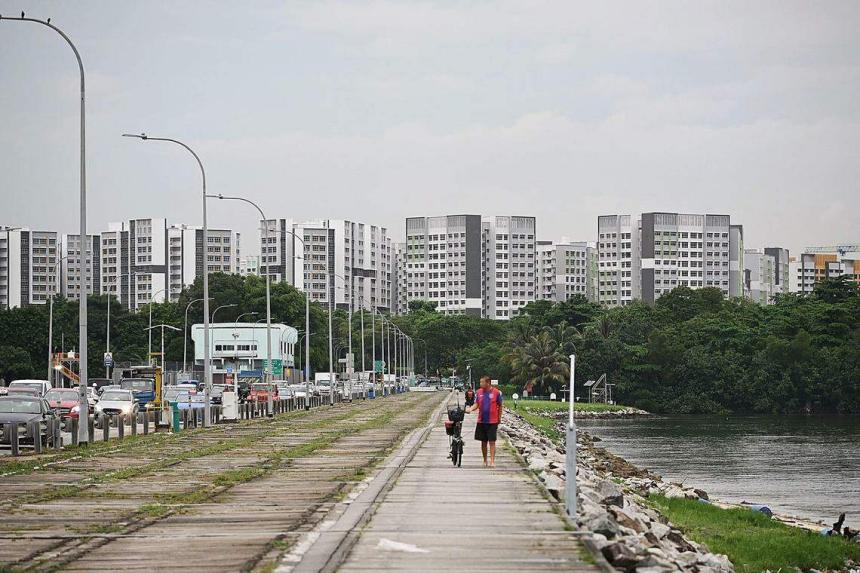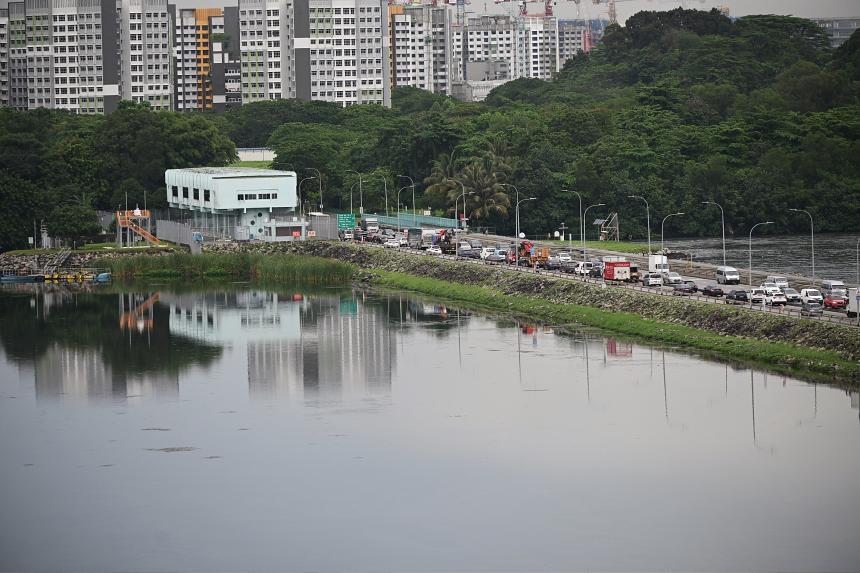SINGAPORE - The road junctions on both sides of Yishun Dam are slated to be expanded by 2026 to ease traffic jams in the area during the morning and evening peak hours.
A Land Transport Authority (LTA) spokeswoman said the entry and exit points along the dam will be widened to accommodate a growing volume of traffic, which is expected to increase further as more residents move into Build-To-Order (BTO) units in Nee Soon Link, Nee Soon East and Sembawang.
Three traffic junctions will be expanded and reconfigured – at Yishun Avenue 1 and Yishun Avenue 8, Yishun Avenue 1 and Seletar West Link, and Seletar West Link and West Camp Road. The plan is for vehicles heading to Seletar North Link via Seletar West Link to use West Camp Road instead.
Nee Soon GRC MP Derrick Goh put up a post on Facebook about the improvement works in March.
“As vehicles will be discharged more quickly at the junctions, the traffic along the dam will flow faster, especially during the peak hours,” he said then.
Mr Goh told The Straits Times that he has received feedback from residents in the Nee Soon Link ward about traffic congestion in the Yishun Dam area since 2019, when he was still a grassroots volunteer.
Residents reported heavy traffic along Yishun Dam during peak hours from around 7am to 8.30am and 6pm to 7.30pm, which would worsen when it rained, he said.
In his Facebook post, Mr Goh had said the improvements are an interim measure to ease the traffic congestion at Yishun Dam, “given that the original full improvement plans to be done in 2030 (were) way too far into the future”.
Asked about these plans, the LTA spokeswoman said improving the road junctions was the fastest way to address the traffic situation in the immediate term, as it involves less extensive works that are mostly within existing road boundaries and hence do not require an environmental impact study.
She noted that expanding the road along Yishun Dam would require “significant and costly structural strengthening of the dam”, and potentially impact biodiversity in the area as well as the Seletar Fishing Village located near the junction of Yishun Avenue 1 and Seletar West Link.
As environmental studies would have to be carried out along with strengthening works, this option would not be in time to cater to the growing traffic volume, she added.
The spokeswoman said the changes to the junctions will be permanent. With the upcoming North-South Corridor set to provide an alternative travel route for motorists when it opens in phases from 2027, “there are no immediate plans to widen the existing road along Yishun Dam or to build a new bridge across Lower Seletar Reservoir”, she added.
The improvement works include building a park connector beside the road along Yishun Dam. Mr Goh said this will provide a dedicated cycling path for cyclists, who currently use the road to travel across Yishun Dam.

Precautionary measures such as the installation of silt screens and noise and environmental management controls will be put in place while the works are being carried out, said the LTA spokeswoman.
Motorists who spoke to ST welcomed the improvements, although some were doubtful about their effectiveness.
Engineering manager Rod Gregorio, 45, said he is hopeful that expanding the road junctions will ease the congestion, as these areas tend to be choke points where traffic builds up.
Transport executive Karyn Tay, 35, said the addition of lanes along Yishun Avenue 8 would be helpful, given the heavy traffic congestion in the area.
Building manager Lokman Nurhakim, 42, is uncertain if the measures will be effective, given that the road along Yishun Dam will not be widened. “The bottleneck is at the main bridge, which is at the dam itself, so that is the problem area,” he said.
While Mr Goh said the improvement works are a “welcome sight” for Nee Soon Link residents, he noted that further measures may be needed in the future, as traffic volume will continue to grow, with more residents moving into upcoming housing projects in the area.


